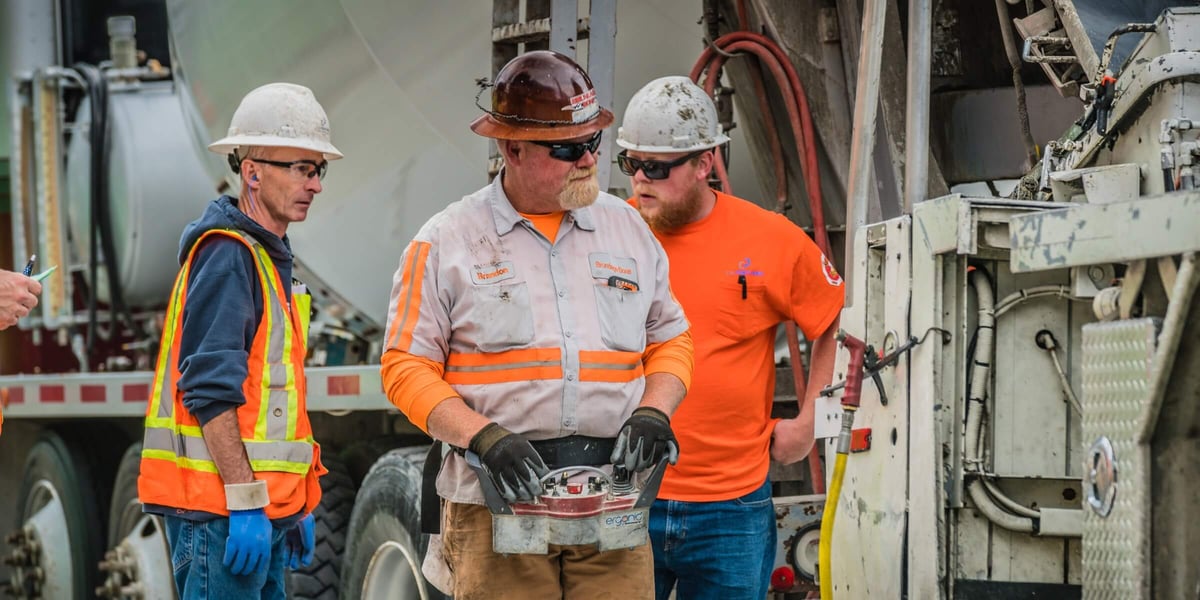The Complete Concrete Pump Operator Safety Checklist

The Complete Concrete Pump Operator Safety Checklist
If you own or operate concrete pumping equipment, you already know the importance of safety. Concrete pumps are amazing machines that can perform large tasks in short time frames. However, concrete pumps carry the risk of workplace injury or even death if their operators don't follow essential safety protocols.
This guide will provide a rundown on the basics of concrete pump operator safety. With this information, you and your operators can create a comprehensive safety checklist for operating your concrete pumping equipment.
The Main Types of Concrete Pumping Hazards
The first step toward achieving a perfect concrete pump safety record is understanding the specific hazards operators may face. By understanding these dangers, your operators can prevent accidents before they occur.
Here's a summary of the three main types of concrete pumping hazards:
- Pumping Concrete: Concrete is, essentially, liquid rock. Concrete pump operators spend their workdays throwing this liquid rock through a tube at extremely high pressures. Without proper safety protocols, this high-pressure pumping can cause property damage, equipment damage, or severe injuries.
- Mechanical Issues: Even high-quality pumping equipment requires routine maintenance. Mechanical issues in concrete pumping equipment can damage other types of equipment or vehicles, and operators can also suffer injuries if they occur during pumping.
- General Job Site Safety: Concrete pump operators also face the general hazards found in most industrial workplace environments. Slipping risks, falling debris, electrical hazards, and weather hazards all present danger to concrete pump operators on top of the risks that are specific to the pumps themselves.
For a complete breakdown of the most common concrete pump hazards (and how to prevent them) check out our blog post here: The Top 10 Concrete Pump Hazards and Safety Precautions
The Complete Concrete Pump Operator Safety Checklist
The good news is that knowledge of these hazards goes a long way toward preventing accidents. While hazards will always be present when you're working with any heavy machinery, concrete pump operators can reduce the risk of accidents by using a helpful safety checklist.
Checklists are simple but effective tools for preventing workplace accidents. Concrete pump operators can use such checklists to identify each potential hazard that may be present before pumping operations begin. By using a safety checklist, operators can avoid accidentally overlooking one or more potential hazards before an accident occurs.
The following concrete pump safety checklist is a helpful resource that concrete pump operators can use to perform preliminary safety checks before pumping concrete.
Mounting and Dismounting
The Construction Safety Association of Ontario (CSAO) estimates that mounting and dismounting accidents account for around one-quarter of all workplace injuries suffered by heavy equipment operators.
- Always follow the “three points of contact” rule (two hands and one foot on the equipment, or one hand on the equipment and two feet on the ground, at all times).
- Only mount or dismount equipment on designated mounting areas.
- Avoiding mounting in slippery conditions.
- Avoid mounting when the equipment is in motion.
- Make sure your operators never stand between the mixer and the pump.
Eye Protection
Concrete pumping operators face many eye hazards. Flying dust, debris, sparks, and chemical splashes can damage unprotected eyes. What’s more, concrete pump operators face different types of eye hazards that may require specific types of protective gear.
- Before starting concrete pumping operations, make sure to identify potential eye hazards present. The presence of flying dust and debris represents a distinct hazard from chemical splashes and requires different safety equipment.
- Make sure your operators are equipped with the necessary eye protection gear for these specific hazards.
- Make sure that all eye protection is up to standard and does not contain any critical flaws or damage that can increase the risk of eye damage.
- Operators should avoid wearing contact lenses during concrete pumping.
- Eye protection lenses should be cleaned with water or a designated cleaning solution.
Hearing Protection
Without hearing protection, pump operators can suffer hearing damage when operating this equipment.
- Always have adequate hearing protection before operating concrete pumps.
- If your operators are working in noisy conditions, keep to eight-hour shifts to avoid prolonged noise exposure.
Personal Protective Equipment
Operators can avoid many workplace accidents by wearing approved personal protective equipment. All concrete pumping operators should have CSA-approved:
- Green-patch safety boots
- Hard hats
- Protective vests
Maintenance
Regular heavy equipment maintenance will help prevent pump-related accidents.
- Always ensure you’re following safety sling policy.
- Don’t remove the water box cover while the machine is stroking.
- Always check your outrigger pins before travel.
- Stick to a routine maintenance schedule for all of your concrete pumping equipment.
- Always follow the manufacturer’s maintenance instructions.
- Regularly inspect your equipment for damaged or defective parts.
- Document all maintenance done on your equipment.
Heat Safety
Concrete pump operators often work outdoors in hot environments, especially during the summer. Without proper preparation, they can suffer heat-related health issues, such as heat cramps, heat rashes, heat exhaustion, and even fatal heat stroke.
- Always check the weather forecast in your area to see the projected high temperatures.
- Make sure your crew has loose-fitting clothing and ample hydration during working hours.
- Keep watch for the warning signs of heat stroke and other heat-related illnesses during operations.
Cold Safety
Operating concrete pumps in cold conditions can also increase the risk of work-related health emergencies. Exposure to cold conditions can cause hypothermia or frostbite, which can result in hospitalization or even death if left untreated.
- Identify cold-weather concrete pumping conditions beforehand.
- Make sure your crew has appropriate cold-weather gear, including extra layers of clothes, gloves, and boots.
- Make sure all clothes are dry during operations in cold weather.
- Watch out for the warning signs of hypothermia and other cold-related health emergencies.